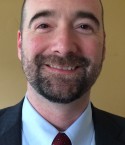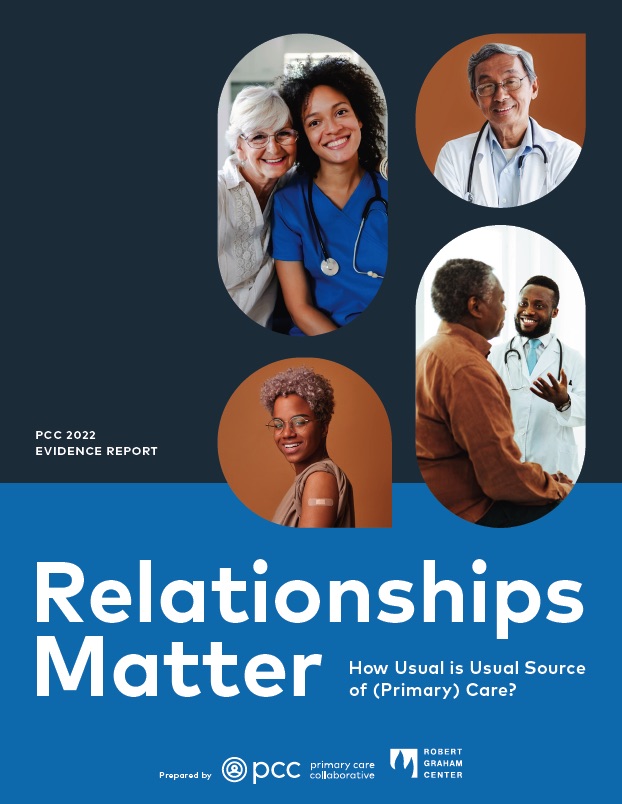You are looking at an archived version of our site. Please visit thepcc.org for a fresh, new experience!
April Lunch and Learn Discussion
April Lunch and Learn
Discussion Summary
April 21, 11am-12pm ET
We were pleased to welcome J. William Kerns, MD from Virginia Commonwealth University, Jonathan Winter, MD, from Virginia Commonwealth University, Morgan Daven, MA, from the Alzheimer’s Association, and Bruce Landon, MD, MBA, MSc, from Harvard Medical School to present two articles on PCC’s curated research list (view the full list of 24 articles here) and discuss the policy and practice implications.
The two articles discussed included:
- Kerns JW, Winter JD, Winter KM, Boyd T, Etz RS. Primary Care Physician Perspectives about Antipsychotics and Other Medications for Symptoms of Dementia. J Am Board Fam Med. 2018 Jan-Feb;31(1):9-21. doi: 10.3122/jabfm.2018.01.170230. PMID: 29330235.
- Basu S, Phillips RS, Berkowitz SA, Landon BE, Bitton A, Phillips RL. Estimated Effect on Life Expectancy of Alleviating Primary Care Shortages in the United States. Ann Intern Med. 2021 Jul;174(7):920-926. doi: 10.7326/M20-7381. Epub 2021 Mar 23. PMID: 33750188.
Primary Care Physician Perspectives about Antipsychotics and Other Medications for Symptoms of Dementia
Behavioral and psychological symptoms of dementia like agitation, paranoia and combativeness are common in all forms of dementia. These behaviors are often the most intrusive, hardest to manage, and most associated with institutionalization. We currently over rely on risky medications to treat them, namely antipsychotics. If we know these drugs have severe risks, why do we see clinicians continue to use them at such a high level?
The research revealed several barriers to using non-medication treatments for symptoms of dementia: 1. non-medication efforts were hard to use because getting caretakers trained and informed was challenging, 2. barriers exist for non-pharmacologic treatments that just don't exist for drugs. Drugs are cheap, easy to prescribe and readily available, 3. the guidelines for non-medication procedures were often not very helpful.
Recommendations:
- Clinicians should be educated about non-medical treatments and know how and when to use medicines when they are necessary.
- We need better guidelines and primary care physicians should be involved in guideline development.
- Non-pharmacologic treatments need to be affordable, widely available, and supported by evidence.
- primary care clinicians and their teams need more training, education, and resources on non-medication options.
- Alzheimer’s Association Reflections
- Non medication interventions can be effective if the primary care team are trained and have access to the resources needed. The Alzheimer's Association recognizes the potential side effects and dangers of antipsychotic medications and also agrees that sometimes they are needed and can be effective in certain situations.
- The Alzheimer’s Association generally recommends trying non-medication interventions as the first line of defense, while antipsychotic medications considered only after trying non-medication options.
- Advocate for payment models that appropriately considers the full spectrum of dementia care.
- Alzheimer’s Association Resources:
- Alzheimer's and Dementia Care ECHO program for case-based, interactive learning for primary care practice teams:
- Alzheimer’s Association cognitive impairment care planning toolkit:
- Kezia Scales, PhD, Sheryl Zimmerman, PhD, Stephanie J Miller, MSW, Evidence-Based Nonpharmacological Practices to Address Behavioral and Psychological Symptoms of Dementia, The Gerontologist, Volume 58, Issue suppl_1, February 2018, Pages S88–S102, https://doi.org/10.1093/geront/gnx167
- Mary Guerriero Austrom, PhD, Malaz Boustani, MD, MPH, Michael A LaMantia, MD, MPH, Ongoing Medical Management to Maximize Health and Well-being for Persons Living With Dementia, The Gerontologist, Volume 58, Issue suppl_1, February 2018, Pages S48–S57, https://doi.org/10.1093/geront/gnx147
Estimated Effect on Life Expectancy of Alleviating Primary Care Shortages in the United States.
This study investigated how primary care physician supply correlates with outcomes in the health care system. There have been multiple local, state and federal initiatives that seek to address these primary care physician shortages by recruiting and training more primary care physicians in underserved areas. These initiatives include the National Health Service corps, Teaching Health Center Graduate Medical Education (THCGME), and creation of new medical schools with a focus on training more primary care doctors (NYU Long Island, Florida State).
- If we alleviate primary care physician shortages in HPSA counties to have one primary care physician in 3500 people, life expectancy would increase by about 22.5 days. Counties where we alleviate shortages up to one in 1500, would increase life expectancy by about 56 days.
- If we go up to the 1:1500 threshold, the study estimates 7000 averted deaths per year. Alleviating shortages to reach the 1:3500 ratio would require another 17,000 additional physicians or about 14.5 per county. If we go to 1:1500 threshold, that will require almost 100,000 more primary care physicians, which would be a major lift.
- HRSA should consider going back to its 2010 rulemaking and consider updating its official definition of primary care physician shortages to be set at 1:1500.
Additional Resources:
- Young RA, Wilkinson E, Barreto TW, Newton RL, Turebylu A, Bullock D. A cross-sectional study of the practice types of US adult primary care physician specialists [published online ahead of print, 2022 Jan 22]. Fam Pract. 2022;cmab185. doi:10.1093/fampra/cmab185
- Young RA, Tinger S. Attracting Medical Students to Family Medicine: An Historical View. Fam Med. 2022;54(4):290-293. doi:10.22454/FamMed.2022.279855
- Medical Schools with the Most Graduates Practicing Primary Care
Professor of Health Care Policy, Harvard Medical School
Bruce E. Landon, MD, MBA, MSc, is a professor of health care policy at Harvard Medical School and a professor of medicine at the Beth Israel Deaconess Medical Center. He practices internal medicine at BIDMC.
read more
Chief Health Equity Officer/Deputy Chief Health Officer , Merative (formerly IBM Watson Health)
In her role at IBM Watson Health, Dr. Dankwa-Mullan is responsible for the global strategy for driving building clinical evidence for Watson Health solutions. This is accomplished through evaluation research, real-world evidence studies and implementation studies to support evidence-based practices to transform health care. She works with multidisciplinary teams at the interface of big data, cognitive computing and machine learning technology to inform healthcare delivery and clinical decision-making.
read more
Clinical Professor, Virginia Commonwealth University
William (Bill) Kerns was born and raised in Richmond, Virginia, where he attended public high school during a transitional era; hisIowa-born wife Christina jokes that she couldn't get him across the Mason-Dixon Line. The truth is more that after graduating from Yale with honors in Molecular Biophysics and Biochemistry, he welcomed being closer to home at the University of Virginia in Charlottesville for what he thought was going to be a research-oriented MD PhD. Instead, he found that a life of libraries and labs did not suit him. He also discovered that his affinity for people was helpful in medicine. He ran away from research to Family Medicine Residency at Eastern Virginia Medical School. read more
Jack Westfall is a family doctor in Washington, D.C. He completed his MD and MPH at the University of Kansas School of Medicine, an internship in hospital medicine in Wichita, Kansas, and his Family Medicine Residency at the University of Colorado Rose Family Medicine Program.
After joining the faculty at the University of Colorado Department of Family Medicine, Dr. Westfall started the High Plains Research Network, a geographic community and practice-based research network in rural and frontier Colorado. He practiced family medicine in several rural communities including Limon, Ft. Morgan, and his hometown of Yuma, Colorado. read more
Associate Clinical Professor, Virginia Commonwealth University
Dr. Winter was raised in a large family in rural western Maryland. After medical school at Johns Hopkins, he stayed in Baltimore for residency at Franklin Square FMR, while his wife, Katie, finished training as a Family Practice Nurse Practitioner at Hopkins. While at Franklin Square, Dr Winter was the Chief Resident. After residency, Katie came with him to work in our Residency FPC. Dr Winter has had a long interest in primary care based clinical research, which started while he was at Hopkins, and has continued through residency and into his faculty role here. He has a full-spectrum Family Practice, including hospital/ICU and Obstetrics. He also cares for a large number of the patients at the Nursing Home attached to the Warren Memorial Hospital, next to our FPC. He manages our Student Rotation Curriculum. read more
Senior Director for Health Systems, Alzheimer's Association
Morgan Daven is the national Senior Director for Health Systems for the Alzheimer’s Association. He joined the Alzheimer’s Association in 2017 to lead the development of new ways to engage health systems and health care professionals for increased access to timely diagnosis and quality care. Morgan established the Alzheimer’s Association’s Project ECHO Hub, which provides case-based learning programs to improve person-centered care in primary care and long-term settings. He has spent most of his 24-year career in public health, leading clinical and community partnerships to increase access, improve quality, and achieve health equity.
read more
What's New
August 16, 2024
- Page 1
- ››










